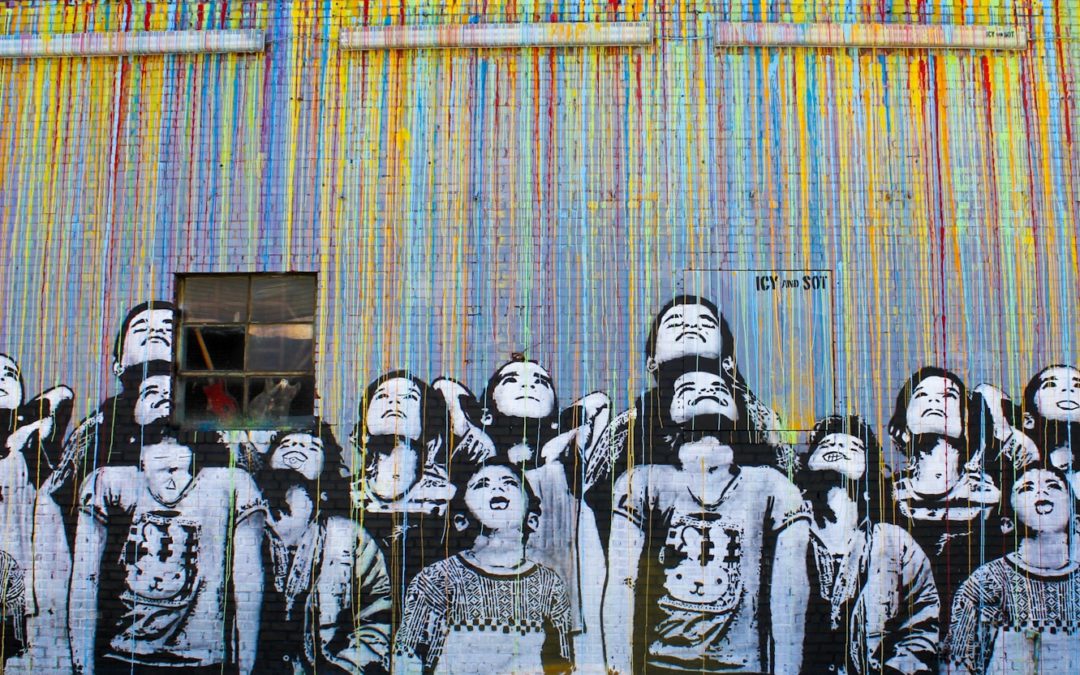Social norms are the unwritten rules of behavior that a group or society considers acceptable, and they can vary greatly around the world. These norms guide our daily interactions, from how we greet one another to how we eat. They’re fascinating because they offer insight into the values, traditions, and priorities of different cultures. This article highlights 100 examples of social norms from various countries, giving readers a look at the rich diversity of human behavior and societal expectations.
Each example on this list showcases both the differences and similarities in the social norms that bring communities together or set them apart. Whether it’s removing shoes before entering a home in Japan, being punctual in Germany, or greeting with cheek kisses in France, these norms reflect the customs and etiquette that shape everyday life. By exploring them, we can expand our view of the world and gain a deeper understanding of the small details that influence social interactions globally.
The Best Examples of Social Norms Around the World
1. Removing Shoes Before Entering a Home (Japan, Scandinavia, and others): In many cultures, it is customary to remove shoes before entering someone’s home as a sign of respect and cleanliness.
2. Greeting with a Bow (East Asia): In countries like Japan and South Korea, bowing is a common form of greeting, showing respect and humility.
3. Avoiding the Left Hand for Eating or Greetings (India, Middle East): The left hand is traditionally seen as unclean, so it is customary to use the right hand for eating and shaking hands.
4. Direct Eye Contact (Western Cultures): In many Western cultures, direct eye contact is seen as a sign of honesty, confidence, and respect during conversations.
5. Avoiding Eye Contact (East Asian and some African Cultures): Conversely, in some East Asian and African cultures, avoiding eye contact is a sign of respect, especially with elders or authority figures.
6. Punctuality (Germany, Switzerland): Being on time is highly valued and expected in these cultures, reflecting respect and efficiency.
7. Flexibility with Time (Latin America, Southern Europe): A more relaxed attitude towards time, where being late is often socially acceptable.
8. Two Kisses on the Cheek (France, Italy, Spain): A common greeting among friends and family, varying in number from one country to another.
9. Tipping (USA, Canada): In North America, tipping service workers is a strong social norm and seen as essential.
10. Not Tipping (Japan, South Korea): Conversely, tipping can be seen as rude or unnecessary in these cultures.
11. Silence in Public Transport (Finland, Japan): Keeping quiet on public transport is a sign of consideration for others.
12. Standing in Line (United Kingdom): Queuing orderly is a deeply ingrained social norm, reflecting fairness and patience.
13. Avoiding Discussing Money (Many Cultures): Talking about personal wealth or asking about someone’s income is often considered rude or taboo.
14. Dress Codes for Religious Sites (Italy, India, Middle East): Dressing modestly and covering up when visiting religious sites is a sign of respect.
15. Sharing Mate (Argentina, Uruguay): The communal drinking of mate is a social activity that signifies trust and bonding.
16. Public Demonstrations of Affection (Varies): Acceptability ranges widely, from common in some Latin American and Western countries to frowned upon in many Asian and Middle Eastern cultures.
17. Eating Everything on Your Plate (China, France): Seen as a sign of appreciation for the meal and the host’s effort.
18. Leaving a Little Food (Philippines, Korea): Conversely, finishing everything can imply the host did not provide enough food.
19. Conservative Dress in Public (Middle Eastern Countries): Dressing conservatively, especially for women, is a norm in many Middle Eastern countries due to religious and cultural reasons.
20. Greeting with a Kiss (France, Brazil, Argentina) – In many cultures, it’s common to greet friends and family with a kiss on the cheek. The number of kisses and which cheek to start with varies by country.
21. Not Discussing Salary (Many cultures) – In numerous societies, it’s considered rude or taboo to ask about someone’s salary. This norm is based on the belief that financial matters are private.
22. Respecting Elders (India, China) – Showing respect to elders is an integral part of many cultures, often demonstrated through language, gestures, and giving up seats for older people.
23. Queueing (United Kingdom) – The British are renowned for their strict adherence to queueing, viewing it as a sign of politeness and order.
24. Avoiding the Number 4 (East Asia) – In countries like Japan and Korea, the number four is often avoided because it sounds like the word for “death.” This can affect everything from floor numbers to gift giving.
25. Eating with Hands (India, Middle East) – In many parts of the world, it’s customary to eat with your hands, seen as a way to connect with the food and considered perfectly polite.
26. Tipping (United States) – Tipping for services such as dining out, taxi rides, and haircuts is expected in the U.S., often seen as a way to supplement income and acknowledge good service.
27. Avoiding Eye Contact (Japan, Korea) – In some Asian cultures, direct eye contact can be seen as aggressive or disrespectful, especially with elders or in formal situations.
28. Punctuality (Germany, Switzerland) – Being on time is highly valued in some cultures, reflecting respect and efficiency. Lateness can be seen as rude or unprofessional.
29. Siestas (Spain) – In Spain, taking a siesta, or a midday break, is a traditional custom, especially in hotter regions, reflecting a cultural approach to work-life balance.
30. Gender Segregation (Saudi Arabia, Iran) – In some countries, social norms dictate separate spaces for men and women in public areas and social gatherings, based on religious and cultural beliefs.
31. Not Wearing Swimwear Off the Beach (Many coastal cities) – In cities with beaches, wearing swimwear away from the beach or pool area is often frowned upon.
32. Jante Law (Scandinavia) – This set of unofficial rules emphasizes humility, equality, and the collective over individual achievements, discouraging boasting or putting oneself above others.
33. Bowing (Japan, South Korea) – Bowing is a common form of greeting, showing respect, gratitude, or apology, with the depth and duration of the bow conveying the level of respect.
34. Fika (Sweden) – The custom of taking a break to enjoy coffee and pastries with friends or colleagues, emphasizing the importance of a work-life balance and socializing.
35. No Loud Conversations on Public Transport (Japan, Nordic Countries) – Speaking loudly or making phone calls on public transport is considered disruptive and rude.
36. Drinking Mate (Argentina, Uruguay) – Sharing a mate, a traditional caffeine-rich infused drink, is a communal activity that follows specific rituals, symbolizing friendship and social bonding.
37. Respecting Silence (Finland) – Finns value silence and consider it a form of communication. Unnecessary small talk is often avoided, and silence is not seen as awkward but as a comfortable and respectful space.
38. Afternoon Tea (United Kingdom) – The tradition of having tea in the afternoon, often accompanied by sandwiches and cakes, is a quintessential British custom that emphasizes social gathering and relaxation.
39. Direct Communication (Netherlands) – Dutch culture values directness and honesty in communication, where speaking one’s mind and straightforwardness are appreciated.
40. Not Eating Everything on Your Plate (China) – Leaving a little food on your plate can be a sign that you were given enough to eat, showing satisfaction and respect for the host’s generosity.
41. Public Bathing (Japan, Iceland) – In Japan, onsens (hot springs) and in Iceland, geothermal pools are popular for communal bathing, emphasizing cleanliness before entering and social relaxation.
42. Carnival (Brazil, Caribbean) – Celebrating Carnival with elaborate parades, costumes, and music is a deeply rooted tradition that expresses joy, culture, and social cohesion.
43. No Talking in Elevators (Many countries) – It’s often considered polite to remain quiet in elevators, especially in professional settings, to respect personal space and privacy.
44. Handshake Strength (United States, Europe) – A firm handshake is seen as a sign of confidence and respect in many Western cultures, while too strong or weak handshakes can be perceived negatively.
45. Removing Hats Indoors (United States, Canada) – Taking off one’s hat when entering a building is a sign of respect, particularly in churches, schools, and when the national anthem is played.
46. Spitting Prohibited (Singapore) – In Singapore, spitting in public is not only considered rude but is also illegal, reflecting the country’s strict standards for public cleanliness and order.
47. St. Nicholas Day (Netherlands, Germany) – Celebrating St. Nicholas Day on December 6th involves giving gifts and sweets, especially for children, highlighting cultural traditions around generosity and family.
48. Floor Seating (South Korea, Japan) – Sitting on cushions or mats on the floor instead of using chairs is common in traditional settings, reflecting a close connection to nature and simplicity.
49. Not Pointing with Fingers (Malaysia, Indonesia) – Pointing with a finger is considered rude; instead, using the thumb or a full hand gesture is preferred for politeness.
50. Paying Separately (Germany, Netherlands) – When dining out in groups, it’s common to split the bill according to what each person ordered, known as “going Dutch.”
51. Sunday Rest Day (Germany, Switzerland) – Many shops and businesses are closed on Sundays, encouraging a day of rest, family time, and outdoor activities.
52. Avoiding Left Hand for Greetings or Eating (India, Middle East) – The left hand is traditionally considered unclean, so it’s polite to use your right hand for eating and greetings.
53. Sobremesa (Spain, Latin America) – The time spent lingering at the table after a meal, talking and enjoying each other’s company, without rushing to clear the dishes.
54. Shoes Off in Mosques (Worldwide) – Removing shoes before entering a mosque is a sign of respect and cleanliness, observed by Muslims around the world.
55. Birthday Person Pays (Sweden, Denmark) – In some Scandinavian cultures, it’s customary for the person celebrating their birthday to treat friends or colleagues, rather than the other way around.
56. Two-Hour Lunch Breaks (Spain, Italy) – Longer lunch breaks are common, allowing for a leisurely meal and a siesta or rest, reflecting a more relaxed approach to the workday.
57. Not Showing Soles of Feet (Thailand, Arab Countries) – Showing the soles of your feet is considered disrespectful, as the feet are seen as the lowest and dirtiest part of the body.
58. Avoiding the Left Hand for Greetings or Eating (Many parts of Africa, Middle East) – The left hand is traditionally considered unclean because it is used for personal hygiene. Therefore, it’s polite to eat, greet, and give or receive items with the right hand.
59. Walking on the Right/Left Side (Various countries) – Depending on the country, there’s a norm for walking on a certain side of the sidewalk or stairs. For instance, in the US and many European countries, it’s common to walk on the right, while in the UK and Australia, the left side is the norm.
60. Not Blowing Your Nose in Public (Japan) – Blowing your nose in public is considered rude and unsanitary. It’s preferable to excuse oneself and find a private place to do so.
61. Removing Hats Indoors (Western cultures) – As a sign of respect, it’s customary to remove one’s hat when entering someone’s home, a church, or when the national anthem is played.
62. Silent Cars on Trains (Netherlands, Germany) – Certain train cars are designated as “silent” where talking loudly, phone calls, and other noises are discouraged to create a quiet environment for passengers.
63. Leaving a Party without Saying Goodbye (France) – Known as “filer à l’Anglaise” (to leave English style), slipping away from a party without a formal goodbye can be seen as polite, avoiding interrupting the host or other guests.
64. Roundabouts in Conversation (Ireland, UK) – It’s common to approach the main topic of conversation in a roundabout way, rather than being direct, to avoid confrontation or discomfort.
65. Not Using First Names Until Invited (Germany, Scandinavia) – In more formal cultures, it’s polite to address people by their last name until they offer the use of their first name.
66. Complimenting Hosts (Middle East) – Guests often compliment the host’s home or possessions, which is a sign of respect and admiration. It’s customary for the host to modestly dismiss the compliments.
67. Covering Mouth When Laughing (Japan) – Especially among women, it’s considered polite to cover one’s mouth with a hand when laughing.
68. Not Asking Personal Questions (Many cultures) – In some societies, asking direct personal questions, especially upon first meeting, is considered intrusive.
69. Sharing Food From a Common Plate (Ethiopia) – In Ethiopian culture, sharing food from a single communal plate is a sign of closeness and community.
70. Not Pointing With Your Finger (Malaysia, Indonesia) – Pointing at someone with a finger is considered rude; it’s more polite to gesture with the thumb or a full hand.
71. Sunday Rest (Germany, Switzerland) – Sundays are traditionally reserved for rest, and activities like mowing the lawn or washing cars can be frowned upon in residential areas.
72. Gift-Giving Etiquette (China, Japan) – When giving or receiving gifts, it’s polite to use both hands as a sign of respect. Also, gifts are often not opened in the presence of the giver to avoid any awkwardness.
73. Clapping After a Flight Lands (Eastern Europe, Middle East) – In some cultures, passengers clap upon a safe landing as a way of thanking and acknowledging the pilots and crew.
74. Not Wearing Bright Colors at Funerals (Western cultures) – Wearing subdued colors, especially black, is a sign of mourning and respect for the deceased and their family.
75. Avoiding Talking Politics or Religion (Many cultures) – These topics are often avoided in polite conversation to prevent conflict or offense, especially when the company includes people of diverse backgrounds.
76. Knocking on Wood (Many cultures) – This practice is done to prevent bad luck after making a favorable or hopeful comment.
77. Use of Honorifics and Titles (Korea, Japan) – Using titles and honorifics is crucial in professional and social settings to show respect and recognize status or seniority.
78. Not Showing the Soles of Your Feet (Thailand, Arab countries) – Showing the soles of your feet is considered disrespectful in many cultures, as feet are viewed as the lowest and dirtiest part of the body.
79. Offering Your Seat to the Elderly or Pregnant Women (Worldwide) – It is a common courtesy in many places to offer your seat on public transportation to the elderly, pregnant women, or those with disabilities.
80. Not Putting Elbows on the Table (Western etiquette) – Traditionally, placing elbows on the dining table while eating is considered poor manners.
81. Crossing Fingers for Good Luck (United States, Europe) – People often cross their fingers as a gesture to wish for good luck or to show hope for a favorable outcome.
82. Breaking Bread as a Sign of Friendship (Middle Eastern cultures) – Sharing and breaking bread with someone is seen as a gesture of friendship and hospitality.
83. Avoiding Talk of Death in Hospitals (China) – Speaking about death or using words associated with death in hospitals is avoided due to superstitions and respect for those who are ill.
84. Saying “Bless You” After Someone Sneezes (Western cultures) – It’s customary to say “bless you” or “gesundheit” after someone sneezes, a tradition rooted in ancient superstitions and concerns for health.
85. Not Discussing Beaches in Rwanda – Due to the landlocked nature of the country and historical sensitivities, discussing beaches can be considered insensitive or out of touch.
86. Wearing Black for Mourning (Western cultures) – Wearing black clothing is a common way to show mourning and respect for the deceased during funerals and grieving periods.
87. Toasting Before Drinking (Eastern Europe, Scandinavia) – It’s customary to make a toast and maintain eye contact before taking the first sip of a drink in a social setting.
88. Not Whistling Indoors (Russia, some Slavic cultures) – Whistling inside a house is considered bad luck, as it’s believed to bring financial hardship.
89. Chewing Gum Discreetly (Worldwide, but especially in Singapore) – Chewing gum is seen as impolite in many cultures, and it’s banned in Singapore except for medical purposes.
90. Not Opening Gifts Immediately (Asia) – In many Asian cultures, it’s polite to set aside a gift to open later, showing that the relationship is more valued than the material gift.
91. Using Both Hands to Give or Receive (Korea, Japan) – Using both hands to give or receive items is a sign of respect, especially when interacting with someone of higher social status.
92. Avoiding the “Thumbs Up” Gesture (Middle East, parts of Africa) – In some cultures, the “thumbs up” gesture can be considered offensive, similar to giving the middle finger in Western cultures.
93. Not Talking on Cell Phones in Certain Public Areas (Japan, Scandinavia) – Using cell phones in public spaces like trains, buses, and waiting rooms is often discouraged to maintain a quiet and respectful environment.
94. Letting the Elderly Serve Themselves First (Many cultures) – At meals, it’s respectful to allow the elderly to begin eating or to serve themselves first as a sign of respect for their seniority.
95. Not Refusing Food or Drink Offers (Middle Eastern, Mediterranean cultures) – Refusing an offer of food or drink can be seen as disrespectful or implying distrust in the hospitality.
96. Not Asking Directly for Things (Japan, China) – Direct requests or refusals can be considered rude; it’s preferable to imply or suggest what you want or don’t want.
97. Expressing Gratitude for Meals (France, Italy) – Saying “thank you” to the host or chef, often with specific phrases like “Merci pour le repas” or “Grazie per il pasto,” is a common practice to show appreciation for the meal.
98. Avoiding Green Hats (China) – Wearing a green hat is associated with infidelity, so it’s avoided to prevent casting aspersions on one’s character.
99. Paying for the Table (Russia, Eastern Europe) – It’s common for one person to cover the entire bill when dining out, rather than splitting it, reflecting generosity and hospitality.
100. Spitting Wine (Wine Tastings Worldwide) – At formal wine tastings, it’s customary to spit out wine after tasting to avoid intoxication, allowing one to appreciate more wines responsibly.
What is Social Norm?
A social norm is a guideline or an unwritten rule that dictates how individuals should behave in a given society or group. These norms cover a wide array of behaviors, including dress codes, manners, greeting rituals, and conversational topics, serving as a framework for acceptable conduct. Social norms ensure the smooth operation of society by promoting order and predictability, fostering a sense of community and belonging among its members. They vary significantly across different cultures and settings, reflecting the values, beliefs, and traditions of each community. Understanding and adhering to these norms can greatly facilitate interpersonal interactions and integration within a society.
A social norm is a rule or guideline within a society that outlines acceptable behaviors, actions, and reactions in various situations. These norms are unwritten but understood by members of the society, influencing how individuals choose to interact and behave among others. Social norms can vary widely across different cultures, communities, and social groups, reflecting shared values, beliefs, and expectations.
Social norms serve several key purposes: they promote order by establishing a predictable pattern of behavior, facilitate social cohesion by reinforcing a sense of belonging and identity within a group, and help to distinguish between appropriate and inappropriate behaviors in social settings. These norms can be further classified into two main types: descriptive norms, which describe what most people do in a given situation, and injunctive norms, which dictate what individuals should do based on societal approval or disapproval.
It’s important to note that while social norms can guide positive behaviors and societal harmony, they can also perpetuate negative practices or inequalities if not critically examined and challenged when necessary. Understanding social norms is crucial for navigating social interactions and contributing to a respectful and inclusive community.
Understanding the Types of Social Norms
A social norm is a rule or guideline within a society that dictates the expected behaviors, practices, and actions of its members. These norms are unwritten rules that help to shape the behavior of individuals within a group, promoting order and predictability. Social norms are fundamental to societal function, as they establish standards for how people should behave in various situations, thereby facilitating social coordination and cooperation. They vary widely across different cultures and can change over time as societies evolve. Social norms play a crucial role in guiding day-to-day interactions, shaping social values, and defining what is considered acceptable or unacceptable behavior within a community.
Social norms can be broadly classified into two main types: descriptive norms and injunctive norms.
- Descriptive Norms refer to the perception of what is commonly done in specific situations. They describe what most people do, without necessarily prescribing what should be done. For example, if most people in a community recycle their waste, this behavior becomes a descriptive norm.
- Injunctive Norms (also known as prescriptive norms) refer to the perception of what is approved or disapproved by society. They prescribe how individuals should behave, indicating what is considered right or wrong within a society. An example of an injunctive norm is the societal expectation to say “please” and “thank you” in polite conversation.
- Beyond these two primary types, social norms can further be classified based on their level of observance and the strength of sanctions for non-compliance:
- Formal Norms: Officially stated rules, such as laws and regulations, that dictate behaviors with clear sanctions for violations. These are the strongest and most explicit norms, enforced by formal institutions.
- Informal Norms: Unwritten rules that govern social behaviors, such as etiquette and customs. These norms are enforced through social sanctions like approval, disapproval, or ostracism, rather than formal penalties.
- Mores: Deeply held norms that embody the moral views and principles of a group. Violations of mores are seen as serious and can provoke strong reactions from the community.
- Folkways: Norms that dictate everyday behaviors and practices, such as dress codes or greeting rituals. These are less strict than mores, and violations are generally met with mild sanctions or social correction.
Importance of Social Norms
Social norms serve as the glue holding communities together. These invisible codes of conduct shape our daily interactions, influencing everything from the way we greet one another to how we conduct business. At their core, social norms facilitate predictability, helping individuals navigate the complex web of social relationships that define human society.
Consider the simple act of queueing. By forming an orderly line, people adhere to a collective agreement on fairness, ensuring everyone is served in turn. This practice, seemingly mundane, exemplifies how social norms promote cooperative behavior, reducing conflict and fostering a sense of communal harmony. Similarly, norms around polite communication, such as saying “please” and “thank you,” not only smooth social exchanges but also reinforce values of gratitude and respect.
Social norms also play a pivotal role in upholding societal values and morals. They act as a compass, guiding behavior in ways that align with the collective ethos of a community. For example, norms against lying or stealing reinforce a society’s commitment to honesty and integrity. By internalizing these norms, individuals contribute to a culture of trust, which is essential for the functioning of any social group.
Moreover, social norms influence identity and belonging. They define the boundaries of acceptable behavior, helping individuals understand their role within a group. This sense of belonging is crucial for social cohesion, as it strengthens group solidarity and encourages cooperation. When people feel they are part of a community, they are more likely to work towards common goals and support one another.
However, the influence of social norms is not static; it evolves with changing societal attitudes and values. Norms that once were considered essential can become outdated as societies progress. This dynamism underscores the importance of critical reflection on existing norms, encouraging adaptability and openness to change. Such reflection ensures that social norms continue to serve the well-being of the community, promoting practices that align with contemporary values.
In essence, social norms are the silent conductors of society, orchestrating the rhythm of daily life. They provide a framework that helps individuals coexist harmoniously, fostering environments where mutual respect and cooperation flourish. By understanding and appreciating the importance of these norms, we can contribute to a more cohesive, respectful, and functional society. In doing so, we not only enhance our personal relationships but also strengthen the fabric of the community at large.
Examples of Bad Social Norms
“Bad” social norms are practices or behaviors widely accepted within a society or group that, upon reflection, can have negative impacts on individuals or the society as a whole. These norms often perpetuate inequalities, harm mental or physical well-being, or hinder social progress. Here are some examples:
Excessive Consumption as Status Symbol: The norm that equates higher consumption with higher social status can lead to environmental degradation and unsustainable living practices.
Stigmatization of Mental Health Issues: In many cultures, there’s a stigma attached to discussing or seeking help for mental health problems, which can prevent individuals from receiving the support they need.
Ostracization of Non-conformity: Social norms that reject individuals who do not conform to mainstream norms can lead to exclusion, bullying, and mental health struggles.
Overwork Culture: In some societies, there’s an expectation to work long hours and prioritize work over personal life, often at the expense of health and family time.
Normalization of Substance Abuse: In certain social circles or societies, regular consumption of alcohol or drugs is seen as acceptable or even desirable, which can lead to addiction and health issues.
Bullying as a Rite of Passage: The idea that bullying is a normal part of growing up and toughens children is harmful and overlooks the serious emotional and psychological damage it can cause.
Undervaluing Public Etiquette: Norms that accept littering, loud behavior in public spaces, or disrespect towards community members contribute to a deteriorating public environment.
Financial Success as the Sole Measure of Achievement: Societies that prioritize financial success over other forms of achievement can diminish the value of personal fulfillment, community service, and intellectual pursuits.
Normalization of Overconsumption: Encouraging the acquisition of more goods as a sign of success, leading to wastefulness and environmental harm.
Taboo Against Discussing Salaries: This norm can prevent workers from understanding their market value and contribute to wage inequality by obscuring pay disparities.
Respect for Authority Without Question: Cultures that discourage questioning authority can enable abuse of power and hinder progress and innovation.
Glamorization of Violence: Media and cultural norms that present violence as glamorous or heroic can desensitize individuals to its consequences and perpetuate cycles of aggression.
Prioritizing Academic Success Over Emotional Intelligence: Valuing grades and test scores over empathy, resilience, and interpersonal skills can lead to a lack of well-rounded personal development.
Stigmatizing Failure: Cultures that view failure negatively can discourage risk-taking and innovation, leading to a fear of trying new things or admitting mistakes.
Expectation of Instant Gratification: The norm of expecting quick results in all aspects of life, fueled by technology and consumer culture, can lead to decreased patience and a lack of persistence.
Celebration of Busyness: Glorifying being busy as a sign of importance and success can lead to burnout, stress, and a poor work-life balance.
These examples highlight how social norms, while powerful tools for organizing societal behavior, can sometimes foster negative outcomes.
The Most Popular on BitGlint

200 Hidden Talent Examples & How to Find Yours
Everyone has hidden talents waiting to be discovered. These natural abilities often remain dormant because we're too...

50 Great Wisdom Examples & Helpful Advice
Wisdom is one of the most important qualities a person can have—but also one of the most misunderstood. It’s not just...

30 Regret Examples & What It Means
Regret is a common human emotion that almost everyone experiences at some point in their lives. It shapes our...

30 Rigidity Examples & What It Really Means
Rigidity affects many aspects of our lives, from physical structures to personal behaviors and organizational systems....

100 Things That Aren’t Real (But We Wish They Were)
Some things only live in stories, dreams, and imagination. From mythical creatures to impossible inventions, there’s a...

Zesty: 30 Examples & Definition and Meaning
Zestiness brings energy, excitement, and bold flavor to life. Whether in food, personality traits, or activities,...

Natural Forces Examples: Strongest & Weakest Forces
Natural forces are the physical powers that operate throughout our universe, shaping everything from the tiniest atoms...
Get Inspired with BitGlint
The Latest
50 Ambition Examples in Life and Work
Ambition is the drive to achieve something greater. It pushes people to improve, set goals, and keep moving forward—even when things aren’t easy. But ambition doesn’t always look the same for everyone. For some, it’s about building a career. For others, it’s about...

Top 30 Synergy Examples in Different Fields & Definition
Synergy represents one of the most powerful concepts across numerous fields - from business and science to relationships and personal growth. When elements combine to create something more valuable than what they could achieve individually, we witness the remarkable...
30 Diligence Examples and Definition
Diligence is often the silent force behind extraordinary achievements. While talent and luck certainly play their roles in success, it is the consistent application of careful, persistent effort that truly transforms potential into reality. In a world that...
50 Moral Principles and Examples of Each
Moral principles serve as the foundation of ethical decision-making, guiding our actions and interactions in everyday life. Whether we realize it or not, these principles shape our personal relationships, professional choices, and societal structures. In today's...

